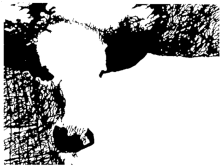“We cannot simply absorb other people’s knowledge, we must create our own." Klas Mellander Learners' Nods May Not Mean What You Think We all want to see our learners nodding in agreement to the things we say. I certainly do. We also want them to smile, show agreement in their body language, and well, show us that we're right. We may be fooling ourselves. Their nods may really mean, "Okay, I see you want us to move on, so yeah, I'll nod in agreement." Funny thing, both kinds of nods look the same. Klas Mellander, the chief designer at Celemi wants to invent a special hat that learners would wear in his seminars. It would have a light on the front that goes red when learners nod and yet they do not understand, and goes green when they nod and truly understand. He even made a short video about this idea that's available here. Have a look at the graphic I've used for this post. What do you see? Would it help if I said, "It's a cow?" Keep looking. Once you see it, you'll likely vocalize your learning with an "Oh" or "Okay!" We make meaning from the dots and shapes. It's a natural thing. We do it all the time. When we finally do "see the cow" we have difficulty un-seeing it. Cool, huh? Yes, we are always looking for evidence that our learners have learned, and more importantly, can perform. It's well established in the literature that just because someone has learned something does not mean they can do something. Yet, learning is an essential step in the process. The light has to come on! The "ah-ha" needs to happen. The lesson needs to go from working memory to the more sustainable long-term memory. We need this in order for the learning to have a chance to be applied back on the job. And when real learning happens, your learners will try to apply their learning back on the job. It's natural. It's important. Your best people will persist with application until the work environment (boss, reward system, etc.) either goes along with them or snuffs them out. Either way, with real learning, learners will feel obligated to 'have a go" at applying it. We should engage learners in the content so you have lots of opportunities to observe it. The only way to observe, really, is to stop talking so much. Have your learners work through the content in a meaningful way. They'll connect the dots and create meaning. Have them show you. Once they show you, assess their learning and correct or confirm it. Provide simulation, application, feedback. Provide worked out examples of what you really mean, and what you don't. If we do more of this, we'll see only "green" nods in our seminars, and that is certainly a wonderful thing.
0 Comments
Your comment will be posted after it is approved.
Leave a Reply. |
"The views expressed here do not necessarily represent the unanimous views of all parts of my mind."
- Malcolm McMahon AuthorDan Topf, CPT is Sr. Vice President at MDI, Inc. Business Learning by Dan: Primers for TrainersPDF versions of short articles on how to integrate business acumen into all training and development:
The Income Statement Cash Flow Price and Volume The Circulation of Capital The Cost of Capital Market Differentiation Industry-specific: Financial Services -- Life Insurance/Annuities Retailing Archives
January 2021
|


 RSS Feed
RSS Feed